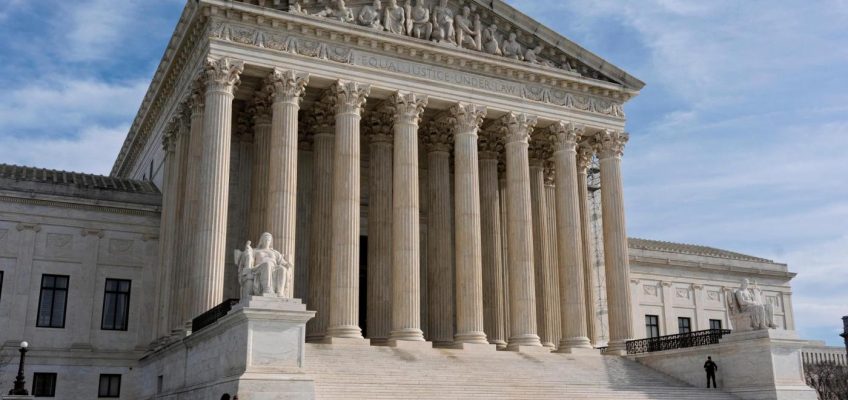By MARK SHERMAN
WASHINGTON (AP) — The Supreme Court is allowing President Donald Trump to put his plan to dismantle the Education Department back on track and go through with laying off nearly 1,400 employees.
Related Articles
Cuomo stays in NYC mayor’s race as an independent after losing Democratic primary to Mamdani
New York clerk again refuses to enforce Texas judgment against doctor who provided abortion pills
New tax break for auto loans could save some buyers thousands of dollars. But will it boost sales?
‘Beautiful’ or ‘Ugly,’ Trump’s big bill shapes the battle for House control in 2026 midterms
Under fire by Trump over costs, Chair Powell seeks watchdog review of Fed building overhaul
With the three liberal justices in dissent, the court on Monday paused an order from U.S. District Judge Myong Joun in Boston, who issued a preliminary injunction reversing the layoffs and calling into question the broader plan.
The layoffs “will likely cripple the department,” Joun wrote. A federal appeals court refused to put the order on hold while the administration appealed.
The high court action enables the administration to resume work on winding down the department, one of Trump’s biggest campaign promises.
The court did not explain its decision in favor of Trump, as is customary in emergency appeals.
But in dissent, Justice Sonia Sotomayor complained that her colleagues were enabling legally questionable action on the part of the administration.
“When the Executive publicly announces its intent to break the law, and then executes on that promise, it is the Judiciary’s duty to check that lawlessness, not expedite it,” Sotomayor wrote for herself and Justices Ketanji Brown Jackson and Elena Kagan.
Education Department employees who were targeted by the layoffs have been on paid leave since March, according to a union that represents some of the agency’s staff.
Joun’s order had prevented the department from fully terminating them, though none had been allowed to return to work, according to the American Federation of Government Employees Local 252. Without Joun’s order, the workers would have been terminated in early June.
The Education Department had said earlier in June that it was “actively assessing how to reintegrate” the employees. A department email asked them to share whether they had gained other employment, saying the request was meant to “support a smooth and informed return to duty.”
The current case involves two consolidated lawsuits that said Trump’s plan amounted to an illegal closure of the Education Department.
One suit was filed by the Somerville and Easthampton school districts in Massachusetts along with the American Federation of Teachers and other education groups. The other suit was filed by a coalition of 21 Democratic attorneys general.
The suits argued that layoffs left the department unable to carry out responsibilities required by Congress, including duties to support special education, distribute financial aid and enforce civil rights laws.




